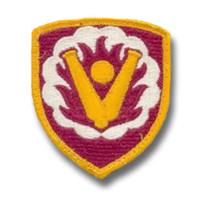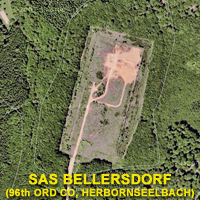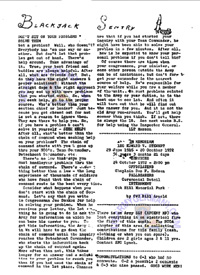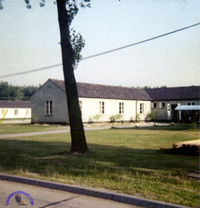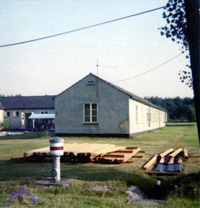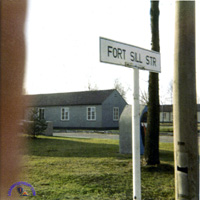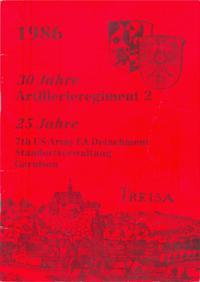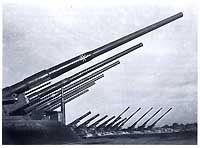| If you do
NOT see the Table of Contents frame to the left of this page, then
Click here to open 'USArmyGermany' frameset |
||||||||||||||||||||||||||||||||||||||||||||||||||||||||||||||||||||||||||||||||||||||||
|
557th
US Army Artillery Group |
||||||||||||||||||||||||||||||||||||||||||||||||||||||||||||||||||||||||||||||||||||||||
|
|
||||||||||||||||||||||||||||||||||||||||||||||||||||||||||||||||||||||||||||||||||||||||
|
||||||||||||||||||||||||||||||||||||||||||||||||||||||||||||||||||||||||||||||||||||||||
|
||||||||||||||||||||||||||||||||||||||||||||||||||||||||||||||||||||||||||||||||||||||||
|
|
||||||||||||||||||||||||||||||||||||||||||||||||||||||||||||||||||||||||||||||||||||||||
| History | ||||||||||||||||||||||||||||||||||||||||||||||||||||||||||||||||||||||||||||||||||||||||
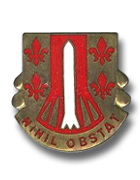 557th US Army Artillery Group DI 557th US Army Artillery Group DI |
||||||||||||||||||||||||||||||||||||||||||||||||||||||||||||||||||||||||||||||||||||||||
(Source: A Look Back ... at the 59th Ordnance Brigade. Final issue of the 59th COURIER, the command newspaper, published in 1992.) |
||||||||||||||||||||||||||||||||||||||||||||||||||||||||||||||||||||||||||||||||||||||||
| 557th US Army Artillery Group | ||||||||||||||||||||||||||||||||||||||||||||||||||||||||||||||||||||||||||||||||||||||||
| The 557th U.S. Army Artillery Group was constituted in the U.S. Army in February 1943 as the 557th Field Artillery Battalion. The battalion was activated in May 1943 at Camp Gruber, Okla. Following training, the battalion travelled to Europe where it received credit for participation in four campaigns. Headquarters and Headquarters Battery, 557th Field Artillery Battalion was redesignated as Headquarters and Headquarters Battery, 436th Field Artillery Group in June 1947, and activated in Chicago, Ill. The group was inactivated in Chicago in December 1948. Redesignated as Headquarters and Headquarters Battery, 557th Field Artillery Missile Battalion in July 1952, the unit was allocated to the regular Army. In February 1955, the battalion was redesignated as the 557th Field Artillery Missile Battalion (Corporal), and it was activated at Fort Bliss, Texas in April. The battalion was inactivated in Germany in June 1958 and the battalion, less the headquarters, was disbanded. The Headquarters was redesignated in June 1963 as Headquarters and Headquarters Detachment, 557th U.S. Army Field Artillery Group. The group was activated at Fort Sill, Okla. in December 1965. In December 1965, the 557th U.S. Army Artillery Group received reassignment orders to the Special Ammunition Support Command in Germany. The 557th proceeded to Herbornseelbach, where it remained until it inactivated in June 1992. 3rd U.S. Army Field Artillery Detachment The 3rd U.S. Army Field Artillery Detachment was activated in September 1962 at Fort Sill, Okla. as the 3rd U.S. Army Missile Detachment. The detachment was assigned to the 4th U.S. Army and attached to the 1st Field Artillery Missile Brigade, Field Artillery Missile Training Command. With subsequent mission assignment to provide special ammunition support to selected non-U.S.-NATO units, the 3rd USAFAD departed the United States and arrived in Germany in February 1963. In June 1970, the detachment was reassigned to the 557th U.S. Army Artillery Group. The 3rd was located in Phillipsburg and inactivated on Feb. 15, 1992. 7th U.S. Army Field Artillery Detachment The 7th U.S. Army Field Artillery Detachment was activated in December 1961 at Fort Sill, Okla. as the 7th U.S. Army Missile Detachment. The detachment was assigned to the 1st Field Artillery Brigade, Field Artillery Missile Training Command. The unit satisfactorily completed training in March 1962 and subsequently arrived in Germany in May of that year. The 7th USAFAD was assigned to the 512th U.S. Army Artillery Group until June 1966 when it was reassigned to the 557th U.S. Army Artillery Group and located in Treysa. The unit inactivated in June 1992. 30th U.S. Army Field Artillery Detachment The 30th U.S. Army Field Artillery Detachment was activated in March 1951 at Fort Sill, Okla. as the 30th Field Artillery Counter-mortar Radar Detachment. The detachment served in Korea, receiving credit for one campaign and was awarded the Republic of Korea Presidential Unit Citation. The unit was inactivated in Korea in October 1951. In September 1959, the 30th was redesignated and activated as the 30th U.S. Army Missile Detachment. The detachment arrived in Germany in March 1960 and was assigned to the 557th U.S. Army Artillery Group in June 1966 and sent to Giessen. It inactivated in June 1992. 83rd U.S. Army Field Artillery Detachment The 83rd U.S. Army Field Artillery Detachment was activated in December 1966 at Fort Sill, Okla. as the 83rd U. S. Army Missile Detachment. The detachment was assigned to the 3rd Battalion, 38th Artillery for command and support and further to the 9th Field Artillery Missile Group of the III Corps. The 83rd arrived in Germany in August 1970 and was assigned to the 557th U.S. Army Artillery Group. The 83rd was located in Montabaur and inactivated in June 1992. 85th U.S. Army Field Artillery Detachment The 85th U.S. Army Field Artillery Detachment was constituted in the U.S. Army in November 1966 at Fort Sill, Okla. as the 85th U.S. Army Missile Detachment. The detachment was assigned to the 2nd Battalion, 79th Artillery. In November 1968, the unit was reassigned to the 2nd Battalion, 44th Artillery. In August 1969, the 85th moved to Europe and was assigned to the 5th U.S. Army Artillery Group in November of that year. In October 1979, the detachment was reassigned to the 557th U.S. Army Artillery Group. The 85th was one of only two Pershing 1A warhead detachments in the world. The 85th U.S. Army Field Artillery Detachment was inactivated in April 1991 in Geilenkirchen, Germany. 96th Ordnance Company The history of the 96th Ordnance Company dates back to the activation of the 8th Mobile Repair Shop in August 1914 at Camp Hancock, Ga. The unit was reorganized as an inactive Army unit in the 1930s and in 1939 it was disbanded and renamed the 96th Ordnance Company. The company was activated in World War II and saw service in the Asian-Pacific Theater, earning a Meritorious Unit Citation. Deactivated in Hawaii in 1948, the company was reactivated in 1952 at White Sands Proving Ground, N.M. where it remained until its deactivation in 1957. (1) On Jan. 6,1959. the 96th Ord. Co. was activated as a Special Ammunition, General Support unit at Sandia Base, N.M. In January 1961, the 96th moved to Red River Army Depot, Texas where it remained until July 1966. At that time, the company moved to Germany and was assigned to the 548th U.S. Army Artillery Group with further assignment to the 557th U.S. Army Artillery Group. The 96th was collocated with the group headquarters in Herbornseelbach. The 96th inactivated June 1992. (1) This official history is not quite accurate. The 96th Ordnance Comany was deployed to Germany in this timeframe and served at Mainz-Gonsenheim as a Guided Missile Direct Support company, supporting a CORPORAL missile unit. Click here for more... |
||||||||||||||||||||||||||||||||||||||||||||||||||||||||||||||||||||||||||||||||||||||||
| SPECIAL AMMUNITION STORAGE SITES - 557th ARTILLERY GROUP | ||||||||||||||||||||||||||||||||||||||||||||||||||||||||||||||||||||||||||||||||||||||||
|
||||||||||||||||||||||||||||||||||||||||||||||||||||||||||||||||||||||||||||||||||||||||
| Headquarters/Headquarters Det, 557th USAAG | ||||||||||||||||||||||||||||||||||||||||||||||||||||||||||||||||||||||||||||||||||||||||
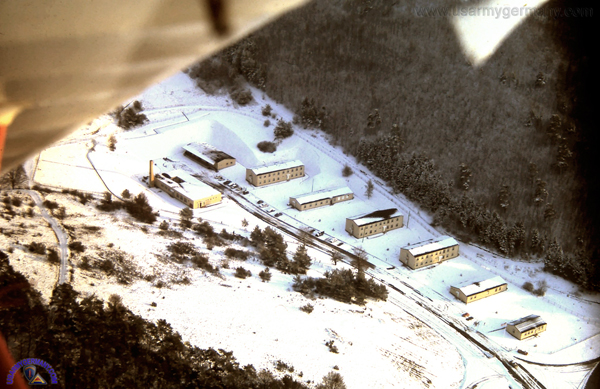 Aartal Kaserne, 557th US Army Artillery Group, 1968 (Michael Bauer) |
||||||||||||||||||||||||||||||||||||||||||||||||||||||||||||||||||||||||||||||||||||||||
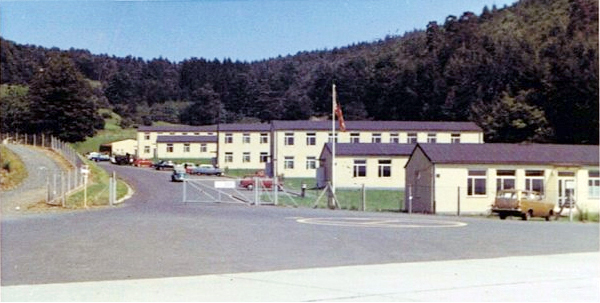 Aartal Kaserne, 557th US Army Artillery Group, 1967 (557th USAAG FB) |
||||||||||||||||||||||||||||||||||||||||||||||||||||||||||||||||||||||||||||||||||||||||
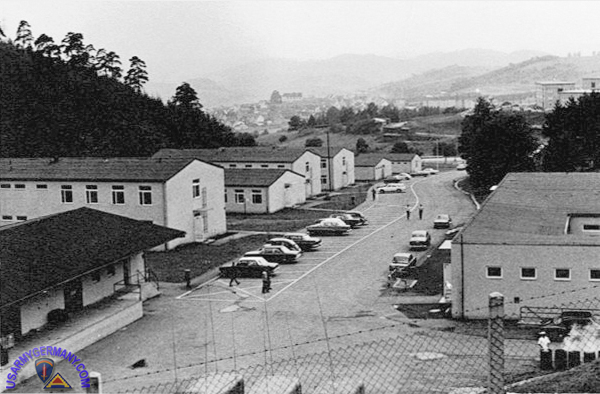 Aartal Kaserne, 557th US Army Artillery Group, 1970s |
||||||||||||||||||||||||||||||||||||||||||||||||||||||||||||||||||||||||||||||||||||||||
| 96th Ordnance Company | ||||||||||||||||||||||||||||||||||||||||||||||||||||||||||||||||||||||||||||||||||||||||
| 1982 | ||||||||||||||||||||||||||||||||||||||||||||||||||||||||||||||||||||||||||||||||||||||||
|
||||||||||||||||||||||||||||||||||||||||||||||||||||||||||||||||||||||||||||||||||||||||
| We passed all our NSIs no comments-no deficiencies. We worked our butts off getting ready for those. A lot of sanding and painting. I was also on the Nuclear Accident Incident team whenever there was an air mission in our sector. We were tested on that ever 12 months. The local watering hole was Deckers guesthouse at the bottom of the hill. That hill was tough to climb when after a night of drinking. We sure drank a lot of the local beer called Barenbrau. At the unit lounge a bottle of Heinken was .50. Since we were a NATO unit the Germans supplied all the transportation. So we did not have a motor pool. All personnel and finance offices were in Giessen. Out-processing was an ordeal. We had it made. It was easy duty. The longest we went to the field was 5 days and field duty was easy. Since I had a TSBI clearance my duty was in the comm room dealing with EMAS/SANRAS. We could not receive AFN-TV so we received video tapes of shows from the States. That is how I found out there had been a small tremor in Pennsylvania. Since we were an outlying unit we had free first run movies. I worked with a great group of people. The 11Bravos were a great group to hang with. I remember a SGT Frank Kratz and SGT Jerry Gillespie. I learned a lot from them. If I remember more I will let you know. |
||||||||||||||||||||||||||||||||||||||||||||||||||||||||||||||||||||||||||||||||||||||||
| 3rd US Army Artillery Detachment | ||||||||||||||||||||||||||||||||||||||||||||||||||||||||||||||||||||||||||||||||||||||||
| Supported Command: Artillerieregiment 12, Panzerdivision 12 (link) | ||||||||||||||||||||||||||||||||||||||||||||||||||||||||||||||||||||||||||||||||||||||||
| The 3rd US Army Missile Detachment supported the 122nd Rocket Arty Bn and the 121st FA Bn. | ||||||||||||||||||||||||||||||||||||||||||||||||||||||||||||||||||||||||||||||||||||||||
| 1969 | ||||||||||||||||||||||||||||||||||||||||||||||||||||||||||||||||||||||||||||||||||||||||
| (Source: Email from Ed Arroyo, 1969-72) | ||||||||||||||||||||||||||||||||||||||||||||||||||||||||||||||||||||||||||||||||||||||||
| I was stationed in Germany with the 3rd USA Army Missile Detachment in Philippsburg between the years of 1969 to 1972. It was great duty and I got to meet a lot of great people both from the German military side as well as the citizens who lived in the small town down the road from the Kaserne. I do remember that the group was very small when I got there. I believe that there were a total of 33 missile and howitzer folks there. About an equal half were married and living off post or living in the one building unit just passed the entrance to the kaserne. We were part of SASCOM and so were stationed there as part of the host nation NATO agreement. Unlike other missile groups that were stationed on U.S. Army bases in Germany. Our Captain at the time was I believe Captain Shumate. My Honest John (team) sergeant for my group had the last name of Carter. Our mission at the time was to be the support group for the German missile battery that was there. They were cross-trained on the mating of the rocket motor to the warhead and then my group would do all of the arming and final firing of the missile. We were trained on the warhead as though it were a nuclear device. Our times were primarily spent performing these routines at least once a week with both the Germans and with our own unit. There were also two 8-inch howitzer equivalent groups that trained Germans, too. One of the Sergeants in charge of that group had the last name of Kelly. I wish I could remember more names. Along with both missile and artillery groups there was a radio group stationed there and we had a large radio tower. I believe they were called STRATCOM. All in all it was great duty there. For several of us, we were able to manipulate the rules a little and acquire things that our Army counterparts couldn't. I was able to purchase an automobile and drive before reaching the proper rank. Others were able to move out and live in apartments. As I recall, the town was a very friendly town. What I learned was if you tried to learn their culture, they would always make you feel comfortable. I remember going to meet everyone on Friday nights at various dance halls. Everybody would invite us over to have a drink and relax and enjoy their music. I have sat down many times since then to think about the many great moments I had while stationed there. I wish I could find those that were stationed there during my stay, but those folks have all gone their separate ways. |
||||||||||||||||||||||||||||||||||||||||||||||||||||||||||||||||||||||||||||||||||||||||
| 1981 | ||||||||||||||||||||||||||||||||||||||||||||||||||||||||||||||||||||||||||||||||||||||||
| (Source: Email from Phil Palmer, 3rd USAFAD, 1981-1983) | ||||||||||||||||||||||||||||||||||||||||||||||||||||||||||||||||||||||||||||||||||||||||
| I came straight to Germany from AIT and was assigned to the 3rd USAFAD in Phillipsburg from the 557th in Herborn-Seelbach. I arrived at the 3rd USAFAD in December of 1981 and left for Ft. Knox in July of 1983. My MOS was 76Y and I was the unit armorer and supply clerk for the duration of my stay. I also filled in on guard duty at the munilager (SW depot -- southeast of Phillipsburg ( I was also the CQ runner every other night almost my whole time there. My main job as the runner was to wax the floors at night to a very bright shine. The reason for that being so important was that the 3rd was called the "showplace of the 59th". Everything had to be clean as a whistle because when the higher-ups wanted to give a tour of a special weapons unit to a general or senator, the 3rd was where they took them. I read some of your site and saw a reference to BG Harry Walker. I received a nice letter from him when I left the 3rd. I also have a few pics from the 3rd and philippsburg if you are interested. I will try to post the pics that I have and send you the links hopefully within the next week or so. I also have my Bundeswehr Ausweis for Salm Kaserne (Bundeswehr Kaserne at Phillipsburg) and a dress 59th Ordnance patch. Don't know if you know this but the 59th didn't have it's own insignia/patch until mid 1982 or so. Before then we wore the USAREUR patch. The one that was blue with the flaming sword. |
||||||||||||||||||||||||||||||||||||||||||||||||||||||||||||||||||||||||||||||||||||||||
| 7th US Army Artillery Detachment | ||||||||||||||||||||||||||||||||||||||||||||||||||||||||||||||||||||||||||||||||||||||||
| Supported Command: Artillerieregiment 2, Panzergrenadierdivision 2 (link) | ||||||||||||||||||||||||||||||||||||||||||||||||||||||||||||||||||||||||||||||||||||||||
| The 7th US Army Missile Detachment supported the 22nd Rocket Arty Bn and the 21st FA Bn. | ||||||||||||||||||||||||||||||||||||||||||||||||||||||||||||||||||||||||||||||||||||||||
| 1962 | ||||||||||||||||||||||||||||||||||||||||||||||||||||||||||||||||||||||||||||||||||||||||
| (Source: Email from Edwin Murwin, 7th Msl Det, 1962-64) | ||||||||||||||||||||||||||||||||||||||||||||||||||||||||||||||||||||||||||||||||||||||||
I was assigned to the 7th Artillery Missile detachment from August 1962 until Febuary 1964. I served with Jerry Lovitt and he was one of the best comrades you could ever serve with. The duty for the first year was almost unbearable but after a change in command it became much more pleasant. With Guard duty every 4 days and weekend duty once a month. The rest of the time we were training.
We had no PX. We had a mess hall with a mess sergeant (E6), a first cook (Sp5) and an E4 cook. We also had a movie every night. Sunday afternoon was free to all personel and also dependents. I was assigned the projector which was issued in Giessen and when clearing, I had forgot about clearing the projector. So, I suppose it is still there. We were custodians for special weapons for the German army and we depended on them to supply us for everything concerning transportation. We usually walked to Treysa when we were on pass. Some of the off post personel had cars and some bicycles. Roershain was a small town also near by, but few if any americans ever went there since we all had our special hangouts in Treysa, i.e. Gasthaus May and Hotel Borj. I was In Honest John and we also had an 8 inch section. If we had an emergency we were sent to the German dispensary for meds unless our apc tablets would take care of us. For regular dental or other sickness we went to the American dispensary in Giessen. Once a month if we were lucky we could go to Giessen on the ration and mail truck. In the dead of winter this ride could be a little chilly. But there we could visit a real American PX otherwise we had to use the German canteen with limited and high cost merchandise. However the only action I saw was Jerry Lovitt get in a fight. |
||||||||||||||||||||||||||||||||||||||||||||||||||||||||||||||||||||||||||||||||||||||||
| (Source: Email from Jerry Lovitt, 7th Msl Det, 1963-65) | ||||||||||||||||||||||||||||||||||||||||||||||||||||||||||||||||||||||||||||||||||||||||
| I served in the 7th (MSL) Det, 512th Artillery Group at Treysa Germany from May 1963 thru Dec 1965. It was the best possible duty a U.S. Army soldier could have. We had the Honest John and 8-inch warheads and supported the III Corps German Army. They were inactivated in 1992 and I wondered if you had any info on them |
||||||||||||||||||||||||||||||||||||||||||||||||||||||||||||||||||||||||||||||||||||||||
| 1981 | ||||||||||||||||||||||||||||||||||||||||||||||||||||||||||||||||||||||||||||||||||||||||
| (Source: Email from Dave Hart, 7th USAFAD, 1981-84) | ||||||||||||||||||||||||||||||||||||||||||||||||||||||||||||||||||||||||||||||||||||||||
| I was stationed at the 7th Arty Det in Treysa from 1981-1984. I was the only power generator mechanic for the unit. My duties were maintaining the 1.5kw gen sets and the AN/GRC-165 radio sets. When not performing these duties, I was either pulling guard duty at the ammo site, or pulling EMAS/SANRAS duty [CQ] at the detachment. We were totally supported by the Germans -- transportation, billeting [both on post/off post]. All of our food, mail, pay and logistical support came from Giessen. The ammo site that we pulled [custodial agent] guard duty at was located outside a small town called Roershain ( I am happy to help in any way pertaining to the 59th Ord Bde site. I hope this helps. The det was made up mostly of 13B (MOS) personnell. There were two teams [Alpha and Bravo]. I believe Alpha was 8in and Bravo was 155. Each team leader had an E6 in charge. The Mess section consisted of an E6 mess sgt and an E4 cook. We had German nationals [3 women] who helped prepare food and did 'KP'. There was an E6 supply sgt and an E4 supply clerk [also performed duty as unit armorer]. The 2 Lieutenants were in charge of the weapons teams [8in and 155]. One of the Lt's was XO and responsible for OPSEC/COMSEC and the other was Mess Officer/Supply Officer and Pay Officer. There was also an E6 who was responsible for classified material/PAL, and was in charge of the unit lounge. The detachment commander was an O3 (CPT). In the orderly room there was an E8/1SG and a clerk [E4]. These personell handled all matters dealing with pay, promotions and orders [PCS -- permanent change of station/ETS -- estimated termination of service]. We had a day room/class room, laundry room, a one room PX and a lounge. Other personnel billeted were signal personnel who worked at the microwave site at the top of the hill [one E4 and two E5's] There were also two TAC/SAT operators [one E4 and oneE5] These personnel worked shifts in the security room along with the CQ .The personnel assigned to this unit were all PRP 9Personnel Reliability Program] and those who pulled CQ were EMAS/SANRAS qualified. When pulling guard shifts at Roershain, there were 3 guards in the SSCC [american]. In the control tower were all Germans, in each corner tower was 1 German and the controlled area was patrolled by 2 Germans. The exclusion area [bunker area] consisted of 2 bunkers, one maint. and assy. bldg and a fire pond. In winter months the gate CA was responsible for keeping one corner open in the pond in case of a fire. These times during the Cold War really drove the point of nuclear war home. It really opened your eyes when the siren sounded and you were running down range alongside a German machine gun crew, not knowing if it was for real or not. I hope this helps you out with your page. This was all seen through the eyes of a then "18" year old Light Wheel Vehicle/Power Gen. mech. |
||||||||||||||||||||||||||||||||||||||||||||||||||||||||||||||||||||||||||||||||||||||||
| 1985 | ||||||||||||||||||||||||||||||||||||||||||||||||||||||||||||||||||||||||||||||||||||||||
| (Source: 30 Jahre Artillerieregiment 2; 25 Jahre 7th US Army FA Detachment, ArtRgt 2, Treysa, 1986) | ||||||||||||||||||||||||||||||||||||||||||||||||||||||||||||||||||||||||||||||||||||||||
| The 22nd Rocket Arty Bn and the 21st FA Bn were supported by the 7th US Army Missile Detachment. The 7th U.S. Army Field Artillery Detachment was activated in December 1961 at Fort Sill, Okla. as the 7th U. S. Army Missile Detachment. The original cadre consisted of 2 officers and 28 enlisted men. After several months of intensive training, preparations for a deployment to Germany began in March 1962. The 7th arrived in Treysa, Germany on May 9 1962. Since then, the detachment has been stationed at Harthberg Kaserne. Today (1986), the unit - under the command of Capt Donald Mundy - is comprised of four officers and 38 enlisted men. The Det is under the control of the 557th USAAG in Herbornseelbach (CO is Lt Col Richard L. Garlitz). Previous Det Commanders:
|
||||||||||||||||||||||||||||||||||||||||||||||||||||||||||||||||||||||||||||||||||||||||
| 30th US Army Artillery Detachment | ||||||||||||||||||||||||||||||||||||||||||||||||||||||||||||||||||||||||||||||||||||||||
| Supported Command: Artillerieregiment 5, Panzergrenadierdivision 5 (link) | ||||||||||||||||||||||||||||||||||||||||||||||||||||||||||||||||||||||||||||||||||||||||
| The 30th US Army Missile Detachment supported the 52nd Rocket Arty Bn. | ||||||||||||||||||||||||||||||||||||||||||||||||||||||||||||||||||||||||||||||||||||||||
| (Source: Email from Roy Burnum) | ||||||||||||||||||||||||||||||||||||||||||||||||||||||||||||||||||||||||||||||||||||||||
| I was a member of the 30th (Missile detachment) when it was formed at Ft. Sill, Oklahoma in 1959. We deployed (to Germany) in early 1960 and were located at Rivers Barracks, just outside of Giessen. We stayed at Rivers Barracks for maybe a month before we went to Sharnhorst Lager (a German base) just down the road. We were there with the warheads that we could not let the Germans have due to a Nato Treaty. We could let them have our Honest John Rockets and other warheads, but not the Nuclear warheads. We stayed in the German barracks and had portable class rooms where we had classes on the warhead. We were driven 3 times a day to Rivers Barracks to eat and also when we needed to go into Giessen to the main PX. We finally got a bunker site towards Frankfurt the last few months that I was there. Guard duty came around pretty often when we only had two teams of 10 each. Due to an Article 15 that was given to my Assistant Chief of Sections on the boat going over, when we got to Rivers Barracks my Chief of Sections made me his assistant. I was only a PFC at the time and I did make SP 4 before I came home. I was a draftee and spent about 13 months in Germany of about 23 months service. I would like to know if you have any history on this. I really enjoyed the German Soldiers that we worked with and the country was beautiful. Thank you for this site. |
||||||||||||||||||||||||||||||||||||||||||||||||||||||||||||||||||||||||||||||||||||||||
| 83rd US Army Artillery Detachment | ||||||||||||||||||||||||||||||||||||||||||||||||||||||||||||||||||||||||||||||||||||||||
| Supported Command: Artilleriekommando 3 (link) | ||||||||||||||||||||||||||||||||||||||||||||||||||||||||||||||||||||||||||||||||||||||||
| The 83rd US Army Missile Detachment supported the 350th Rocket Arty Bn and the 310th FA Bn. | ||||||||||||||||||||||||||||||||||||||||||||||||||||||||||||||||||||||||||||||||||||||||
| 1967 | ||||||||||||||||||||||||||||||||||||||||||||||||||||||||||||||||||||||||||||||||||||||||
| (Source: Email from Steve Shockey) | ||||||||||||||||||||||||||||||||||||||||||||||||||||||||||||||||||||||||||||||||||||||||
| The 83rd Missile Detachment arrived in Montabauer Ger in August of 1967. I was a E3 at the time as a missile crewman. I rotated out in late Sept 1968. |
||||||||||||||||||||||||||||||||||||||||||||||||||||||||||||||||||||||||||||||||||||||||
| 1968 | ||||||||||||||||||||||||||||||||||||||||||||||||||||||||||||||||||||||||||||||||||||||||
| (Source: Email from Michael F. Boyce, 83rd MSL Det, 1968-1970) | ||||||||||||||||||||||||||||||||||||||||||||||||||||||||||||||||||||||||||||||||||||||||
I was drafted in April 1968 and went to Fort Bragg and then Fort Polk for Infantry AIT. After AIT I believed that I was going to Vietnam but was sent to Germany. Spent a couple of weeks in 21st Replacement Bn in Frankfurt being interviewed etc before being sent to Herborn, 557th FA Group, for further assignment of the 83d Missile Det in Montabaur. I left at the end of 1970 returned to civilian life and came back in the Army in Nov 72. Was reassigned to Fort Sill 3/38th FA (I was one of the last persons assigned to 3/38 as we deactivated it, I was then assigned to 9th FA Group unitl I was reassigned to Germany for 2d tour) because I had been reclassified to a 15B Sergeant Missile Crewman at Montabaur. I actually got in personnel and went back to Germay to Bad Kreuznach and was assigned to the Regional Personnel Center RPC-BK, these were 5th Corps units that supported Corps units. We supported 8th ID units and some 32 ADDCOM units. Returned to US in early 77 (Seneca Army Depot, NY State) went back to FRG as PSNCO for 2/28FA in Ansbach. I was at the 210th when it became a Brigade in 1980. Finished my career at Readiness Group - Seneca and spent last 5 years with the Selective Service System in Washington, DC. Retired in Dec 1990 and still work for the VA here in Washington.
Michael Boyce |
||||||||||||||||||||||||||||||||||||||||||||||||||||||||||||||||||||||||||||||||||||||||
MEMORIES OF THE 83RD MSL DET |
||||||||||||||||||||||||||||||||||||||||||||||||||||||||||||||||||||||||||||||||||||||||
|
||||||||||||||||||||||||||||||||||||||||||||||||||||||||||||||||||||||||||||||||||||||||
|
||||||||||||||||||||||||||||||||||||||||||||||||||||||||||||||||||||||||||||||||||||||||
|
||||||||||||||||||||||||||||||||||||||||||||||||||||||||||||||||||||||||||||||||||||||||
|
||||||||||||||||||||||||||||||||||||||||||||||||||||||||||||||||||||||||||||||||||||||||
|
||||||||||||||||||||||||||||||||||||||||||||||||||||||||||||||||||||||||||||||||||||||||
|
||||||||||||||||||||||||||||||||||||||||||||||||||||||||||||||||||||||||||||||||||||||||
|
||||||||||||||||||||||||||||||||||||||||||||||||||||||||||||||||||||||||||||||||||||||||
|
||||||||||||||||||||||||||||||||||||||||||||||||||||||||||||||||||||||||||||||||||||||||
|
||||||||||||||||||||||||||||||||||||||||||||||||||||||||||||||||||||||||||||||||||||||||
|
||||||||||||||||||||||||||||||||||||||||||||||||||||||||||||||||||||||||||||||||||||||||
| The following procedure was performed by each team on the TPI: Each team was responsible for mating the warhead to the missile. Of course we maintained the warheads and the Germans controlled the missile and launchers. Each team performed MAIT operations on TPIs besides their primary functions of convoy ops, maintenance, PAL, and destruction. We did get a commander and a couple of other officers to fill out our authorization within a few months of my arrival in the unit. I believe that we had on Lt. Terry (can’t remember last name) on board when I arrived. All things considered this was a very good assignment. The TPIs were conducted through the fall and winter months. I remember that they started with: |
||||||||||||||||||||||||||||||||||||||||||||||||||||||||||||||||||||||||||||||||||||||||
|
||||||||||||||||||||||||||||||||||||||||||||||||||||||||||||||||||||||||||||||||||||||||
Also had the Atomic Energy Commission inspection, I remember that the inspectors were all O6 rank from Army, Navy, and Air Force. Duty consisted of CQ for NCOs and OD for officers. There was always an officer and NCO on duty. I was a senior custodial agent and pulled guard duty at the storage facility for quite a few months until I was promoted to E5. NCOs and officers pulled CQ and Officer of the Day respectively. These Detachments were the only time that I pulled CQ armed with a 45 auto. There was always an officer on duty because of the two man rule. We would receive various test messages through the Emergency Action Message System (EMAS), delivered via the single sideband radios operated by the communication section at anytime day or night. |
||||||||||||||||||||||||||||||||||||||||||||||||||||||||||||||||||||||||||||||||||||||||
| FOLLOW UP QUESTIONS: 1. Can you remember where the SW depot (basic load for the 350th Msl Bn) was located? That was at our site and I can't remember the name of the little town. It was very close to Montabaur, need to look at a map. [Webmaster: the SAS site was near Horressen ( 2. Can you remember how many firing batteries the 350th had? I believe that they had 3 firing batteries. 3. I noticed that the four teams of the 83rd were organized along functional lines - convoy ops, PAL, maintenance and warhead security/destruction. But if there were two or three firing batteries, wouldn't there have been two or three corresponding Convoy Ops teams, one for each battery? We were organized according to the tasks that we performed on the TPIs, except each team performed mating operations on every inspection. Each of our teams supported a specific battery. I believe that our team was responsible for moving all of the weapons to a location near our firing site. The batteries would have come to us to receive weapons once release was authorized. Each one of us was capable of performing all of the duties. 4. Total strength of the Det? Detachment strength was about 30 not counting the signal element. I visited the unit in the 70s and the signal element had been replaced with the troposphere setup. There was a large antenna in back of the building and a phone on the Det sergeant's desk. We moved with the 350th to our firing site during a Reforger exercise. That was the only time the whole Battalion was deployed. |
||||||||||||||||||||||||||||||||||||||||||||||||||||||||||||||||||||||||||||||||||||||||
| 1972 | ||||||||||||||||||||||||||||||||||||||||||||||||||||||||||||||||||||||||||||||||||||||||
| (Source: Email from John Moser, Det Commander, 83rd FA Det, 1972-73) | ||||||||||||||||||||||||||||||||||||||||||||||||||||||||||||||||||||||||||||||||||||||||
I was a young captain commanding the 83d FA Det., 557th USAAG from about mid-1972 to late 1973. It was one of the detachments collocated with and supporting the III German Corps. After completing my tour with the 83d, I was reassigned to SASCOM Hq, as Asst. S-3, Plans and Operations. My job there was to plan for deployment and employment of classified weapons for all of the six non-U.S. Corps supported by SASCOM, deployed from the north sea to the Alps mountains. These were one Corps each from Great Britain, Belgium, Holland, and three West German corps. The two U.S. Corps were in the center, between two of the German Corps. It was a snap compared to the demands of that small isolated "custodial" unit. My memories of those days in Montabaur are vivid in some respects, and fading in others. I remember that it took about two hours to drive to my next higher U.S. headquarters (557th FA Gp), and just about as long to get a phone call through to them through the German Bundespost system. That was our only telephone service, and it came through our local German military host organization (350th Rocket Artillery Bn.) switchboard. Of course, for emergencies, we had a USAREUR-wide "command net", provided by a separate U.S. communications unit collocated with us. It had a crew of about six or so enlisted, as referenced by other contributors. The command net provided instant communications with USAREUR, but was used only for test messages and actual release messages, none of which thankfully we ever received. Otherwise, administrative communications with any higher U.S. organization was dreadfully slow. Our organic operational communications consisted of High Frequency (HF) Single Side Band (SSB) radios. They also had continuous wave (CW) Morse code capability, but none of us were trained for that. They were the model AN/GRC-165 and weighed about 60 pounds each. They were never intended to be used "mobile", but we did. They were our only means of communicating with deployed teams of the detachment and with higher headquarters. They were a constant problem primarily because they were vacuum tube operated (not solid state), and required "tuning" to each frequency before transmitting. If not done correctly, it was easy to burn out the power tubes and disable the radio's ability to transmit. They were quite similar to HF radios used by HAM (Amateur Radio) operators of the time. We had about 5-6 of these, one of which was always available in the duty officer's area when in the detachment was in garrison. The others went out when we deployed a team(s) with the firing batteries of the 350th Rocket Arty Bn (German), who where our hosts and partners. We had great times with them and they were very professional. We spent a lot of time practicing missile assembly with our hosts and also working with them on security. We maintained "custody", and they provided security... in multiple levels. I do recall that we were under constant pressure because of very short times to react to any incoming USAREUR "test" messages, and ANY breach of security, no matter how small, could be career ending. In my time at Montabaur, there were eleven changes of command among the several missile detachments and the one ordnance company of the 557th FA Grp. Mine and two others were at the end of successful tours. The other commanders were either relieved (fired), generally for failure to pass tortuous and often unannounced inspections (both technical and security), or Reduction-in-Force (RIF) downsizing of the army after Vietnam. I recall it was about half and half. SASCOM had a reputation, for those in the know, as a place NOT to be assigned if you were a young junior field artillery officer arriving in Europe. Of course, few of us had connections to know in advance just how professionally hazardous a tour in SASCOM could be. Less than half survived their command tours in the 557th Group, and I heard it was about the same in the others. I was lucky (and worked/sweated a LOT!). While failing a SASCOM inspection wasn't of much concern to SASCOM commanders (because they made them intentionally over-kill), failing the annual USAREUR inspection could and frequently did cost a detachment commander his job. There was also the greatly feared "Defense Nuclear Agency" (DNA) inspection. They only occurred about every 2-3 years per detachment, and if you were lucky there wouldn't be one on your watch. I had a DNA and two USAREUR (and innumerable SASCOM) inspections during my tenure, and passed them all - pure LUCK! You could fail an inspection for a minor cut on a truck tire that happened to be "down" and not visible when the vehicle was stopped during the convoy phase of an inspection, until the inspectors asked for the vehicles to be rolled forward exposing the cut. This, even though the trucks were provided by, maintained and driven by our German hosts! Aside from the unceasing and incredible pressure EVERY DAY of your command, there were some enjoyable moments socializing with our German military hosts and the local community. We also only had about 40 Americans, along with about 500 German military, in the town of Montabaur, pop. about 15,000. located 20 miles east of Koblinz on the Rhine. We were far removed from any other U.S. units and our few numbers had a much smaller impact on the local community than most large American military installations. We were very favorably thought of by local residents. It was also THE ONLY TIME in my 26 year career that I had absolute hire-and-fire authority. Everyone in the detachment was subject to the Personal Reliability Program (PRP), including our three cooks! There were a lot of technical factors that could disqualify someone, but it still only took the commander's subjective judgment that a soldier wasn't suitable and he departed on the next truck, to be reassigned back into a regular USAREUR unit. I only resorted to it twice, and then only after consulting with the other two officers and a few senior NCO's. One was at the request of local German authorities regarding a married soldier's indiscretion with local ladies, and the other for blatant alcoholism. Not a bad percentage, given the general quality of the American army in Europe of the early 1970's. Other than my tour commanding a 155mm howitzer battery in the First Infantry Div. during the TET offensive in Vietnam, this was the most demanding and high-pressure job I ever had. One old and highly respected deputy SASCOM commander that I admired greatly did admit one night at the club in Pirmasens (after one beer too many), that "SASCOM has a habit of eating its own" (meaning destroying the careers of too many junior commanders), and that as a group they would fair much worse in future assignments and promotions than the general group of young artillery officers. I regret to say that he seems to have been right. The full story of how much they and the NCOs and enlisted men contributed and how little they were appreciated will probably never be known. I offer the following small example, not for self aggrandizement (much too late for that!), but to illustrate. The story of how I "bet my bars" one night to provide security for a USAREUR "special weapons" transport helicopter that made an emergency landing 20 miles from our site and to which I sent security at the expense of our own is also not widely known, except for a few very senior officers at SASCOM and the generals at USAREUR. We learned of the emergency landing through intermittent and unreliable telephone communications (hours apart) with 557th Gp operations. All I knew was that it was a "load carrier"; it was down; we were the closest U.S. unit; USAREUR was "screaming" at SASCOM for help; and it appeared it was us or nobody because bad weather prevented flying. Remember, this was in the German III Corps area, completely outside the U.S. Corps or USAREUR's support areas. However, I never received any guidance about what action, if any, I should take and wasn't able to actually speak or communicate with higher authority until the next day. With the cooperation of our local German host unit, who provided the actual guards, I reduced security at my storage site, without authority, to provide resources to guard the downed helicopter. It had two "custodial agents" on board but no guards. I sent guards from our host German unit and some additional U.S. custodial agents who secured the helicopter until mid-afternoon next day when the weather cleared and the cavalry arrived from USAREUR. It wasn't just SASCOM or USAREUR rules I violated by reducing security at my storage site. It was also DA and DOD rules! It was a potentially career ending decision. It turned out well, and everyone up the chain subsequently "blessed" the operation, but I sweated blood that night. The German III Corps Commanding General, whose troops I'd "diverted" from their assigned duties, received personal recognition from the USAREUR Commanding General. I was "rewarded" at the end of my command tour with an assignment to SASCOM HQ, rather than a staff job at 557th HQ, ostensibly for success with inspections and a good annual Inspector General report. But I'll always think this incident had an impact and contributed to my being among the lucky few to survive commanding a SASCOM custodial unit. SASCOM's contribution to winning the Cold War, relative to its size and numbers (a couple thousand at most), is disproportionally far greater than the better known U.S. corps, in which I also served on other European assignments. SASCOM (59th Ordnance Gp), though its subordinate organizations, controlled far more power than did the U.S. corps. Unfortunately, the junior officers, NCOs and enlisted men who made it work in those small isolated custodial units will probably never receive appropriate recognition. They certainly never received adequate professional recognition. |
||||||||||||||||||||||||||||||||||||||||||||||||||||||||||||||||||||||||||||||||||||||||
| 85th US Army Artillery Detachment | ||||||||||||||||||||||||||||||||||||||||||||||||||||||||||||||||||||||||||||||||||||||||
| Supported Command: Flugkörpergeschwader 2 (link) | ||||||||||||||||||||||||||||||||||||||||||||||||||||||||||||||||||||||||||||||||||||||||
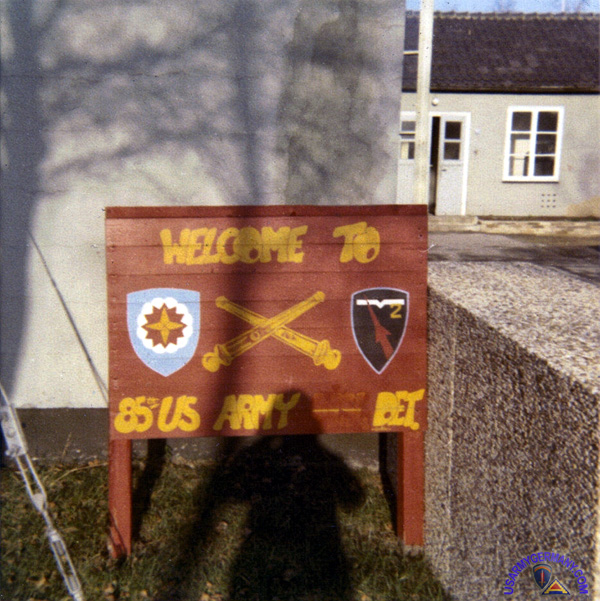 85th Arty Det sign in front of Headquarters Building, Teveren AB |
||||||||||||||||||||||||||||||||||||||||||||||||||||||||||||||||||||||||||||||||||||||||
| 1971 | ||||||||||||||||||||||||||||||||||||||||||||||||||||||||||||||||||||||||||||||||||||||||
| (Source: Email from Dean Rectenwald) | ||||||||||||||||||||||||||||||||||||||||||||||||||||||||||||||||||||||||||||||||||||||||
|
||||||||||||||||||||||||||||||||||||||||||||||||||||||||||||||||||||||||||||||||||||||||
Officers and senior NCOs brought US cars over with them, such as Cadillacs, Oldsmobiles, Dodges, Mercury’s, Chevy‘s. Lower-ranking, lower-paid enlisted personnel bought used European cars for personal transportation. An Opel Admiral was a rarity; more common were Opel Kadets, Fiat 850’s, and the VW Beetle. The theater on the air base showed movies in German (e.g., “The Bridge at Remagen” with German dialogue), except on Sundays when British films were shown (often comedies, such as the “Carry On“ movies). Admission was in Deutsche Marks (DM). Outside the air base, near the housing area, was a British NAAFI store, with pricing likewise in DM; GIs were welcome to walk in and shop there. Support services (medical, large PX, commissary, Army theater) were at AFCENT headquarters at Brunssum and Shinnen in Holland. Every unit member and dependent was issued border crossing paperwork for that purpose. (Click here to read about Dean's assignment to the 1st Arty Det) |
||||||||||||||||||||||||||||||||||||||||||||||||||||||||||||||||||||||||||||||||||||||||
|
||||||||||||||||||||||||||||||||||||||||||||||||||||||||||||||||||||||||||||||||||||||||
| (Source: Email from Michael L. Holmes) | ||||||||||||||||||||||||||||||||||||||||||||||||||||||||||||||||||||||||||||||||||||||||
| I was one of 150 US Army troops on a German Air Force base in NW Germany pulling warhead detachment duties to include mating of warheads, security at the warhead bunker site and security at the launch pad site. In 1972. Germany could own the missile systems but not the warheads because of the WWII treaty. That is why the 85th Arty Det. was there. We went through extensive warhead detachment training for 6 months, above and beyond the regular Pershing training, at Ft. Sill in 1971. The 56th Arty. Group was not the only Pershing unit in Germany. Do you have any other information about the 85th Arty. Detachment or similar warhead detachments in Germany at that time? I’m not sure if the 85th was the only warhead detachment or not at that time. I am proud to have been a part of the Pershing defense system in Germany. |
||||||||||||||||||||||||||||||||||||||||||||||||||||||||||||||||||||||||||||||||||||||||
|
|
||||||||||||||||||||||||||||||||||||||||||||||||||||||||||||||||||||||||||||||||||||||||
| III (GE) Corps - Warhead Custodial Detachments & Supported Formations | ||||||||||||||||||||||||||||||||||||||||||||||||||||||||||||||||||||||||||||||||||||||||
 III GE Corps III GE Corps |
||||||||||||||||||||||||||||||||||||||||||||||||||||||||||||||||||||||||||||||||||||||||
|
||||||||||||||||||||||||||||||||||||||||||||||||||||||||||||||||||||||||||||||||||||||||
| ORGANIZATION (1959 - 1970): ORGANIZATION (1970 - 1979): ORGANIZATION (1980 - 1992): |
||||||||||||||||||||||||||||||||||||||||||||||||||||||||||||||||||||||||||||||||||||||||
|
||||||||||||||||||||||||||||||||||||||||||||||||||||||||||||||||||||||||||||||||||||||||
| Related Links: |
||||||||||||||||||||||||||||||||||||||||||||||||||||||||||||||||||||||||||||||||||||||||
| Artilleriekommando 3 | ||||||||||||||||||||||||||||||||||||||||||||||||||||||||||||||||||||||||||||||||||||||||
| Warhead Custodial Support: 83rd US Army Missile Detachment (link) | ||||||||||||||||||||||||||||||||||||||||||||||||||||||||||||||||||||||||||||||||||||||||
| (Source: Dein Standort Montabaur, Mönch Verlag, 1980)) | ||||||||||||||||||||||||||||||||||||||||||||||||||||||||||||||||||||||||||||||||||||||||
| In 1980, the 3rd Artillery Command of III (GE) Corps consisted of the following units: | ||||||||||||||||||||||||||||||||||||||||||||||||||||||||||||||||||||||||||||||||||||||||
|
||||||||||||||||||||||||||||||||||||||||||||||||||||||||||||||||||||||||||||||||||||||||
| The Raketenartilleriebataillon 350 was established on April 1, 1961 at Eschweiler/Rhld. Training of key personnel of the unit on the SERGEANT missile system was conducted in 1962/63 at Fort Sill, Okla. Once the cadre returned to Germany, the battalion was relocated to Mayen, Germany, were the unit's strength was filled and final preparations were made before the unit became operational. On September 9 1966, the battalion was again relocated, this time to Montabaur. At the end of 1974, a cadre of the battalion was sent to Fort Sill for transition training to the LANCE missile system. Transition of the battalion to the LANCE system was completed by the end of 1977. |
||||||||||||||||||||||||||||||||||||||||||||||||||||||||||||||||||||||||||||||||||||||||
| Related Links: Die Geschichte der Bundeswehr im Münsterland. Herr Dreifke has written (in German) several interesting historical manuals on artillery and other German Army units in the area around Duelmen. Includes nuclear capable units (corps artillery, Art Regt 7, as well as the Transport Battalion 320) that were supported by the 59th Ord Bde. |
||||||||||||||||||||||||||||||||||||||||||||||||||||||||||||||||||||||||||||||||||||||||
| Artillerieregiment 2 (Panzergrenadierdivision 2) | ||||||||||||||||||||||||||||||||||||||||||||||||||||||||||||||||||||||||||||||||||||||||
| Warhead Custodial Support: 7th US Army Missile Detachment (link) | ||||||||||||||||||||||||||||||||||||||||||||||||||||||||||||||||||||||||||||||||||||||||
|
||||||||||||||||||||||||||||||||||||||||||||||||||||||||||||||||||||||||||||||||||||||||
| Related Links: | ||||||||||||||||||||||||||||||||||||||||||||||||||||||||||||||||||||||||||||||||||||||||
| Artillerieregiment 12 (Panzerdivision 12) | ||||||||||||||||||||||||||||||||||||||||||||||||||||||||||||||||||||||||||||||||||||||||
| Warhead Custodial Support: 3rd US Army Missile Detachment (link) | ||||||||||||||||||||||||||||||||||||||||||||||||||||||||||||||||||||||||||||||||||||||||
| (Source: Deine Garnison Tauberbischofsheim, Mönch Verlag, 1978) | ||||||||||||||||||||||||||||||||||||||||||||||||||||||||||||||||||||||||||||||||||||||||
| In 1978, the 12th Artillery Regiment of the 12th Panzerdivision consisted of two battalions and two separate batteries with an overall strength of more than 1700 soldiers. The following units were assigned: | ||||||||||||||||||||||||||||||||||||||||||||||||||||||||||||||||||||||||||||||||||||||||
|
||||||||||||||||||||||||||||||||||||||||||||||||||||||||||||||||||||||||||||||||||||||||
| The 12th Artillery Regiment was formed on May 2, 1964 at Esslingen. The regimental Headquarters and Headquarters Battery relocated to the Kurmainz Kaserne in Tauberbischofsheim later that same year. The 12th Target Acquisition Battery was formed on April 1, 1970 when the Radar Battery and the Sound Locator Battery of the 12th Arty Regt were merged. 4th Btry was established on November 1 1963 as the first element of the 121st Field Artillery Battalion. In February 1964, the Battery was equipped with four M-110 howitzers and towards the end of 1964 was declared operational. On April 1 1969, the remainder of the 121st FA Bn (Hq & Svc Btry, 2nd and 3rd Btry) was formed at Speyer. In the spring of 1970, the 121st was relocated to Tauberbischofsheim. In 1978, the battalion was comprised a headquarters and service battery, two batteries of M-107 175mm guns and one battery of M-110 203mm howitzers (with six M-110's). (Approximately 600 soldiers) The formation of the 92nd Rocket Artillery Battalion began on November 16, 1961 in Großengstingen and was completed on November 14, 1963 when the 4th Battery was organized. In May 1963 the battalion was moved to Pfilippsburg where the 5th Battery of the battalion was laready stationed. On May 1 1964, the 92nd was redesignated as the 122nd Rocket Artillery Battalion and placed under the administrative and operational control of the 12th Arty Regt. In 1978, the battalion was equipped with 9 Honest John rocket launchers. In 1971 the 122nd was reorganized into a Hqs & Svc (Stabs- und Versogungs) Btry, one security (Begleit) battery, one Honest John battery (4 launchers) and two LARS batteries 9 (with eight 110 SF launchers each). Personnel strength of the battalion is about 700 soldiers. |
||||||||||||||||||||||||||||||||||||||||||||||||||||||||||||||||||||||||||||||||||||||||
|
||||||||||||||||||||||||||||||||||||||||||||||||||||||||||||||||||||||||||||||||||||||||
|
Related Links: |
||||||||||||||||||||||||||||||||||||||||||||||||||||||||||||||||||||||||||||||||||||||||
|
||||||||||||||||||||||||||||||||||||||||||||||||||||||||||||||||||||||||||||||||||||||||
